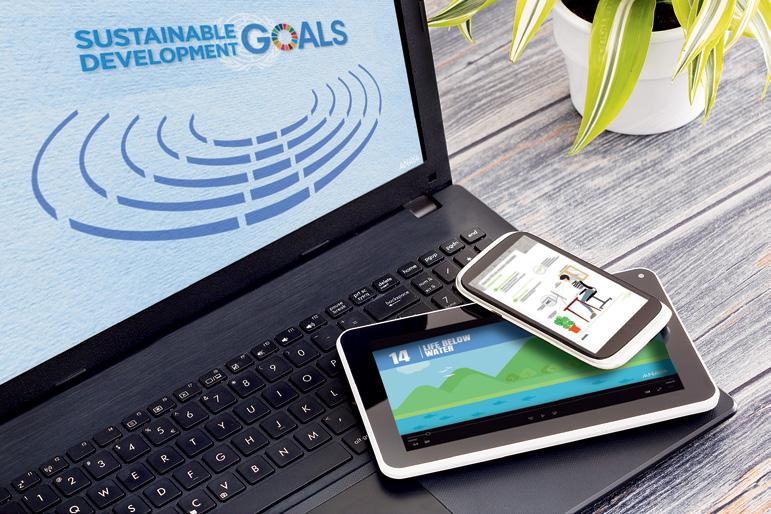The resource bank is LIKE THIS www.anayaeducacion.es A space with resources, techniques and activities, designed to strengthen your knowledge. Access the resource bank by registering at anayaeducacion.es. You just need to have an email, the code indicated on the first page of this book and the permission of a parent or a legal guardian.
More about the keys
Resources related to
THE PROJECT KEYS SDG
SDG Commitment, with microvideos that will help you know what the targets are for reaching the Sustainable Development Goals worked on in this project.
Linguistic Plan, with infographics that will give you models to work with the four linguistic skills, using different types of texts (descriptive, narrative, explanatory, etc.). Cooperative learning Preparing for the task In small groups, of four or five members: 1 All the members of the team will review how the assigned task can be accomplished. 2 To do this, the steps can be shared out to each team member who then in turn will explain how each part of the process can be done to the others. The others listen and participate if they think they can contribute something.
Authorship / adaptation : Variant of the Educational Innovation Laboratory of the colegio Ártica - David and Roger Johnson.
Developing thinking, where explanations are included on how to apply the different strategies for the type of thinking proposed in the project.
3 Once everyone is in agreement on how to do each part, you will all complete the tasks and, finally, verify, among everyone, that you have solved it correctly.
Cooperative learning, which includes the description of the cooperative learning techniques proposed in the project. Emotional education, with resources to support you with overcoming worries generated in different situations in your learning process (beginning of the school year, taking a test, etc.).
Thinking techniques Logic Wheel This thinking technique will help you to establish phases when analysing specific content that you have to study.
Identify What is it? What is it like? Are there different types?
By following a logical sequence (the logic wheel), and by asking yourself a series of questions in each phase, you can:
1
• Identify content by asking yourself: What is it? What is it like? Are there different types? • Compare the content by formulating questions such as: In what way is it similar to ...? In what way is it different from ...? • Establish cause-effect relationships by asking yourself questions such as: Why? What impact does it have ...? • Argue, assess and ask yourself questions such as: What conclusions can be drawn after the analysis? What can be assessed or scored about it? Doing a data dump of these questions into a graphic organiser will help you. Authorship: Hernández, P., and García, L. A.; adapted by Escamilla, A.
Compare
Argue, assess What can we conclude?
4
Logic wheel
2
3 Establish cause-effect relationships Why? What impact does it have ...?
In what way is it similar to ...? In what way is it different from ...?
ICT, by using data sheets that will reinforce your healthy, correct and safe use of information and communication technologies.
Academic and professional orientation, with information on different professions linked to the subject content.
Evaluation, which includes resources for your portfolio, as well as rubrics and targets that will facilitate your self-evaluation.
4


